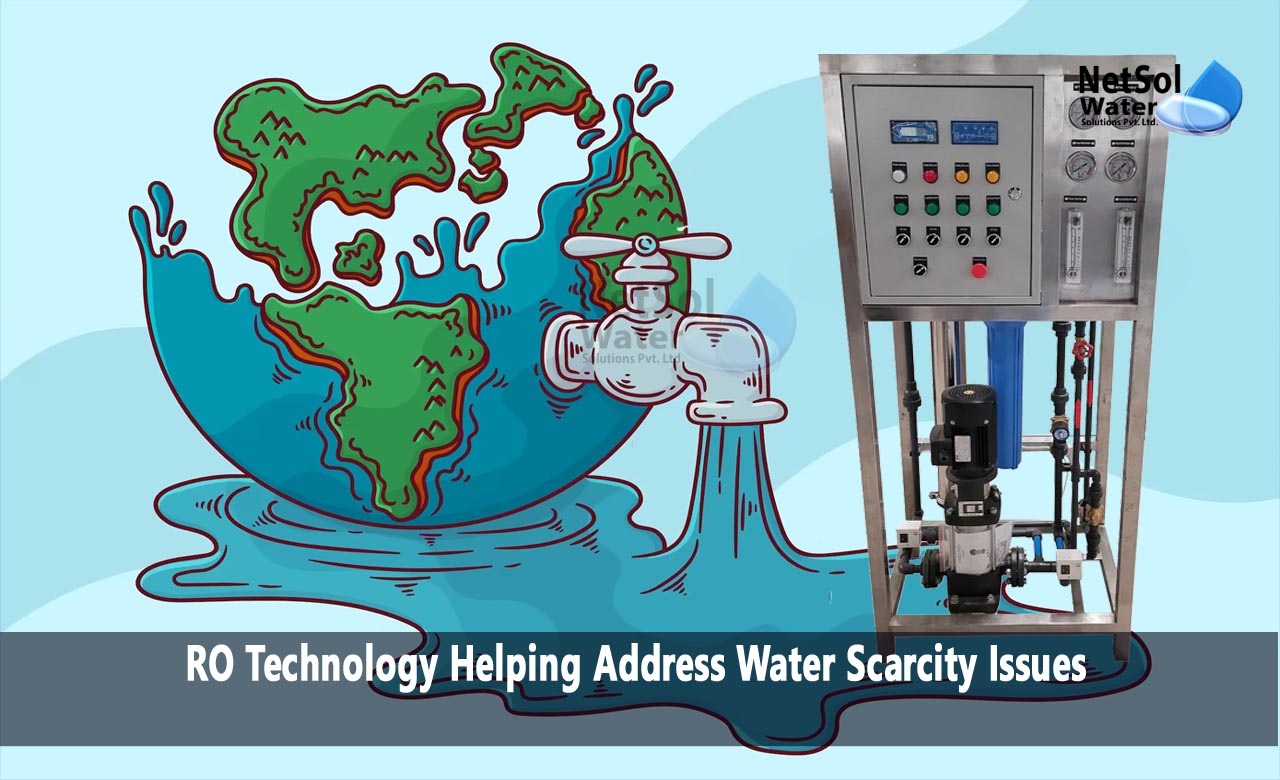Water scarcity is an urgent international trouble affecting millions of people. As the call for fresh and clean water continues to rise due to populace increase and industrialisation, innovative technologies are gambling a vital position in mitigating this task. One such technology is Reverse Osmosis (RO), which has emerged as an effective option to assist in coping with water scarcity issues. In this blog, we will explore how RO technology works and its significance in presenting smooth and safe water in water-scarce areas.
Reverse Osmosis (RO) Technology
Reverse Osmosis is a water purification procedure that uses a semi-permeable membrane to remove contaminants, impurities, and dissolved solids from water. It works on the precept of osmosis, in which water evidently moves from a vicinity of lower solute attention to a region of better solute concentrate through a semi-permeable membrane. In opposite osmosis, this process is reversed, forcing water through the membrane to remove impurities.
Key Components of RO Technology
1. Semi-Permeable Membrane: The heart of RO generation is the semi-permeable membrane. It has tiny pores that allow water molecules to bypass through while blockading larger contaminants, inclusive of dissolved salts, minerals, bacteria, and different impurities.
2. Pressure Pump: To force water through the membrane, a pressure pump is used to create a stress differential, making the technique efficient and effective.
3. Pre-filtration: Before water enters the RO membrane, it goes via pre-filtration to dispose of larger particles and shield the membrane from harm.
How RO Technology Helps Address Water Scarcity?
1. Desalination of Seawater: In arid areas where freshwater assets are restrained, seawater desalination is a recreation-changer. RO technology is widely used to dispose of the salt and impurities from seawater, making it appropriate for consumption, irrigation, and industrial use.
2. Wastewater Treatment and Reuse: RO performs a full-size role in recycling and treating wastewater. It can efficaciously put off contaminants from wastewater, taking into consideration safe reuse in business techniques or, at the same time, ingesting water, thereby lowering the pressure on natural water resources.
3. Removal of Contaminants: RO is quite effective at eliminating a vast range of contaminants, consisting of heavy metals, microorganisms, viruses, and chemical compounds. This ensures that the water produced is not only pure but also safe for intake.
4. Localized Water Production: RO structures are modular and scalable, perfect for localised water production. In water-scarce regions, communities can set up RO units to provide clean drinking water without substantial infrastructure.
5. Agricultural Use: RO generation may be hired to deal with water for agricultural purposes, making sure that plants acquire outstanding water, which can result in progressed crop yields and more excellent sustainable farming practices.
Challenges and Considerations
While RO has numerous blessings, it also has some challenges to bear in mind, such as the want for a solid power source and the technology of brine (concentrated saline answer) as a byproduct. Proper disposal of brine is crucial to prevent environmental harm.
Conclusion
Reverse Osmosis technology is a powerful tool in the fight against water scarcity. It offers a price-effective and efficient way to produce accessible, secure water from several resources, together with seawater and wastewater. As water shortage is still a pressing global issue, the adoption and improvement of RO technology can play a vital position in ensuring that people have access to the crucial resource of accessible water. Combined with sustainable water control practices, RO can convert the lives of thousands by assuaging the weight of water shortage.




